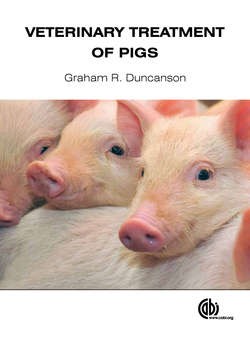Читать книгу Veterinary Treatment of Pigs - Graham R Duncanson - Страница 73
На сайте Литреса книга снята с продажи.
Health Planning
ОглавлениеHerd health plans can be built around a checklist as shown in Table 1.2. A few of the differences between commercial, smallholder and pet pigs are highlighted. There are bound to be anomalies and each herd plan needs to be worked out on an individual basis between the pig owner and the practitioner. Small pig herds will have to decide whether they are to be considered as pets, small groups of pigs kept for home consumption (historically, backyard pig keepers kept four pigs from weaning to slaughter, three would be sold to pay for the food and the fourth would be eaten), breeding herds (catering for specialized meat production), pigs kept for rare breed survival or pigs kept for forest conservation. Pigs taken to agricultural shows are a potential zoonotic risk to the general public (Fig. 1.22). Also this practice should not be encouraged from a disease control point of view. The dangers of returning with a contagious disease are high. Pens of four pigs ready for slaughter are judged at Smithfield at Christmas. Obviously if these animals go on directly for slaughter, the home herd disease status is not compromised.
Fig. 1.14. A sow needs to be well contained.
Health plans can be for the whole pig-keeping operation on a farm or they can be for specific areas, e.g. the farrowing accommodation, the weaner pool, etc. Or health plans can just be for a specific important disease, e.g. herd plans for Salmonella.
